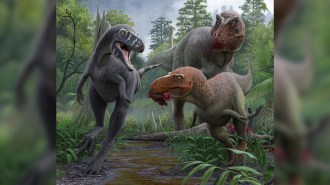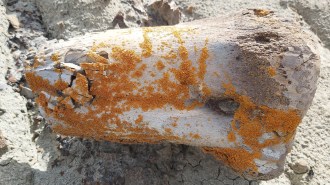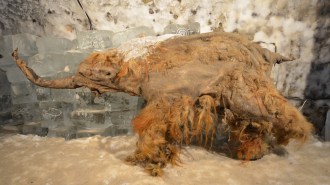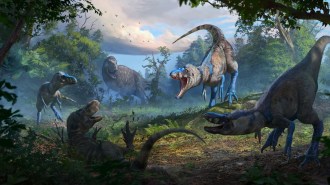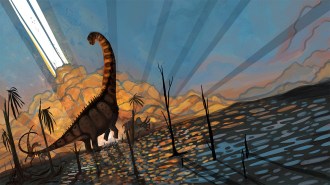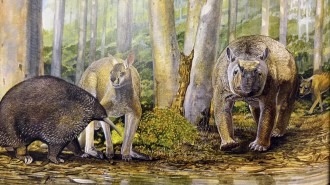Some trilobites grew their own eyeshades
Trilobites strolled the seafloor about 380 million years ago. A thumb-size fossil that preserves the eye structure of one of these multilegged creatures indicates that at least some species were active during the daytime, a lifestyle that scientists previously had only suspected.

The newly unearthed example of Erbenochile erbeni is the first to include a head. This species had eyes like no other trilobite, says Richard Fortey of the Natural History Museum in London. Each of the spiny creature’s two compound eyes was a semicircular tower that sported about 280 individual lenses. Together, the eyes took in light from all directions, even from directly behind the animal.
A wide brim along the top edge of each compound eye blocked light from above, thereby reducing glare. This visorlike feature would be useful only if these trilobites were active during daylight, says Fortey. He and Brian Chatterton of the University of Alberta in Edmonton describe the fossil in the Sept. 19 Science.
****************
If you have a comment on this article that you would like considered for publication in Science News, send it to editors@sciencenews.org. Please include your name and location.

